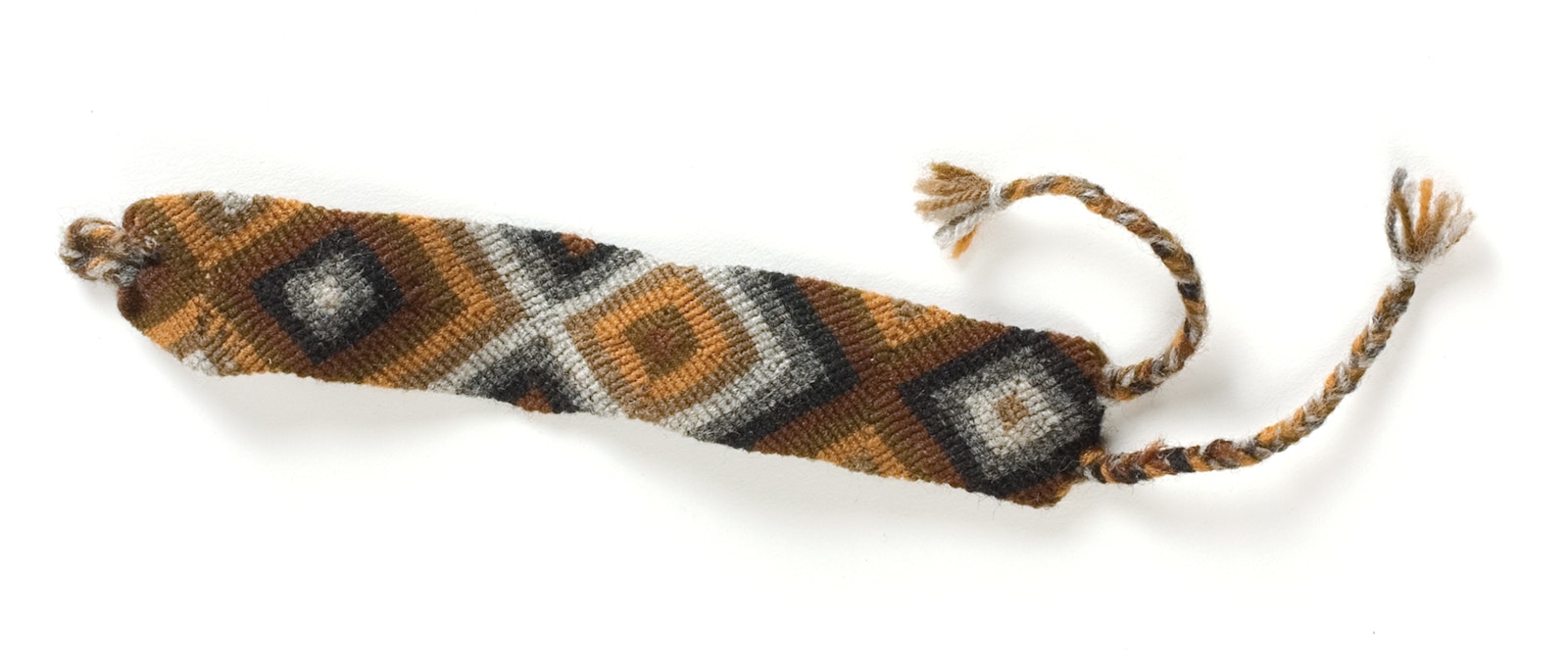Look at the Cavandoli friendship bracelet shown above, bought from a child on the street in Cusco, Peru, for about a dollar. In the bracelet, the pattern lines move diagonally, but this technique is often worked horizontally. The bracelet is composed entirely of one simple knot, the double half hitch, and considered the craft of children.
History
Valentina Cavandoli, who was born in Italy in 1872, grew up to found a school for children in Turin called the Casa Del Sole. She devised what is now commonly known as Cavandoli work to amuse the younger children—five or six years old. The children according to The Anchor Manual of Needlework, “. . . quickly become expert in this work, and from their small hands come, as if by magic, the thousands of practical articles, which are generally offered or sold to the benefactors of the Institution.”
We find this astonishing, having attempted the technique in coarse threads and simple patterns, as shown here, with considerable error and confusion. We also are perplexed by our research, which calls both the diagonal and horizontal versions of this closely worked, two-color macramé “Cavandoli work,” though all the examples we’ve seen from the Cavandoli Casa Del Sole are worked horizontally. When did the diagonal work develop? And how did it come to adopt the Cavandoli name? We don’t know.
What we do know is that once the simple variations on double half hitch are mastered—working from either right or left, using the foundation threads for either pattern or background—one can establish a rhythm, and replicate the most intricate cross-stitch charts with relative ease. Please tell that to your active five- or six-year-old.
Make Your Own
Here are the step-by-step instructions to create the horizontal version.
Fasten a sturdy header cord to a firm pillow. Loop doubled foundation cords over it using lark’s-head knots.
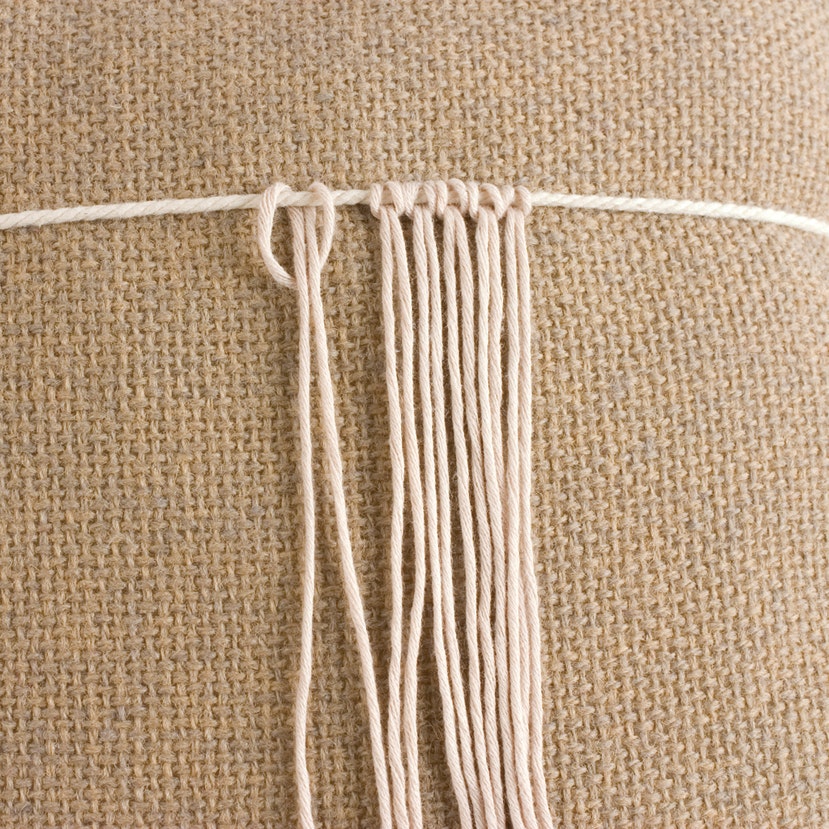
Fasten a long strand of yarn of contrasting color at the left edge of the work. Pass it around the first foundation thread in a half hitch, as shown. Then repeat, for a double half hitch. (The example shown below has two rows already worked.)
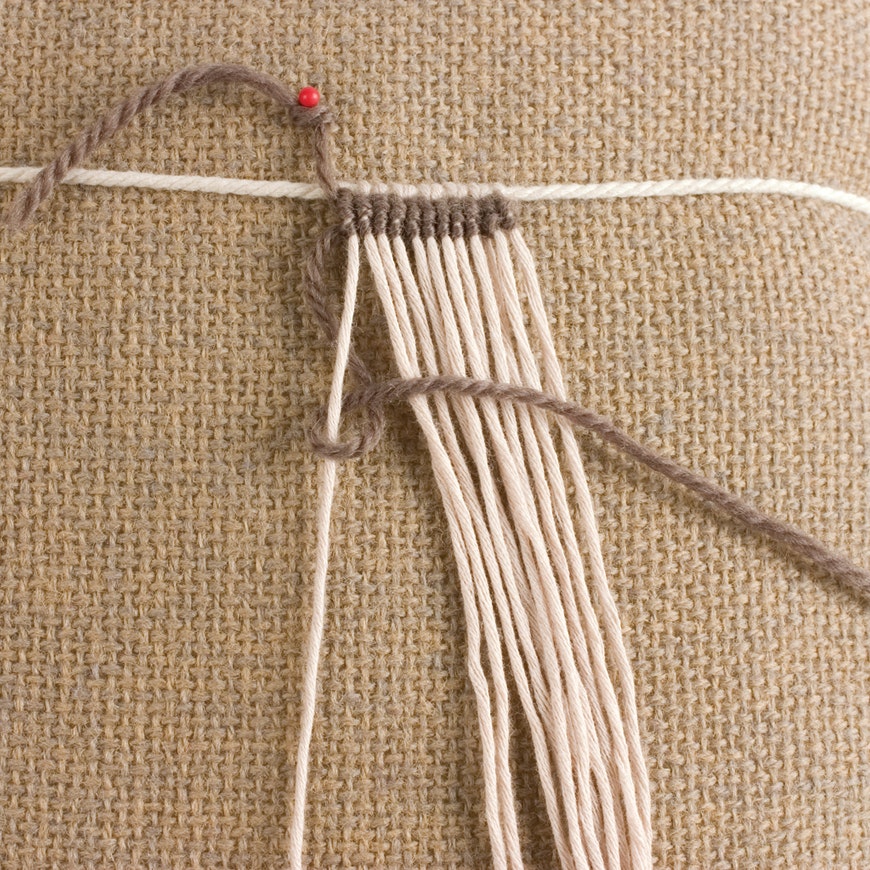
Snug the double half hitch up against the previous row.
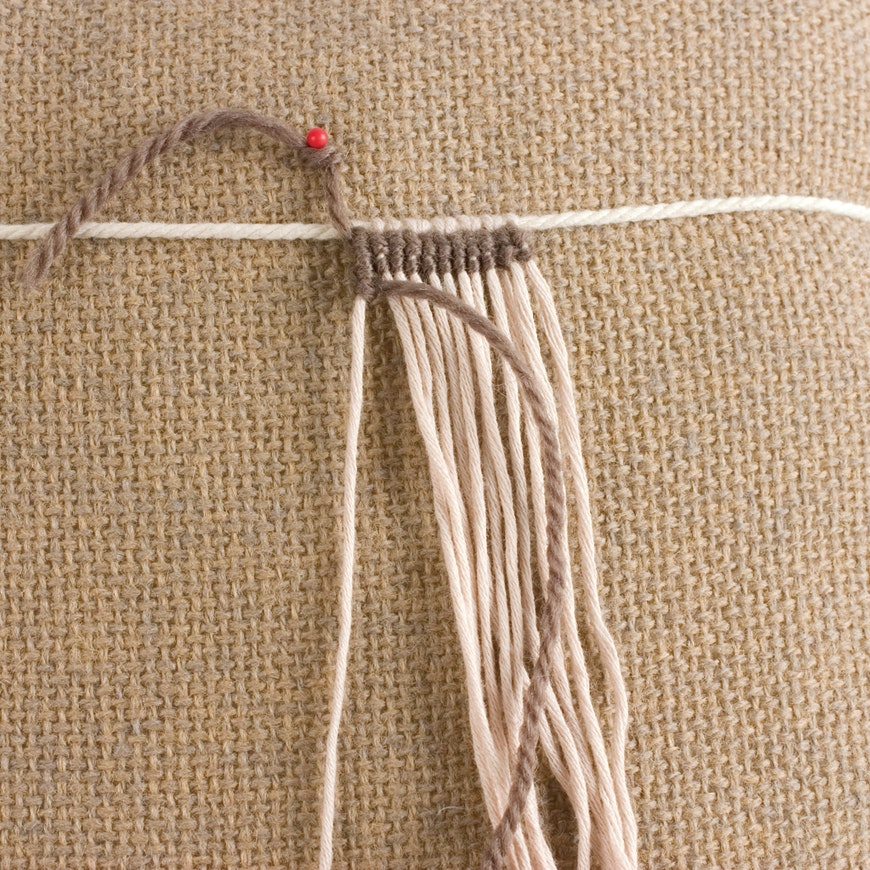
To work a contrasting “pattern” stitch, hold the contrasting thread at a downward angle, and use the next foundation thread as a pattern thread, forming a double half hitch around it. Do this as many times as you wish.
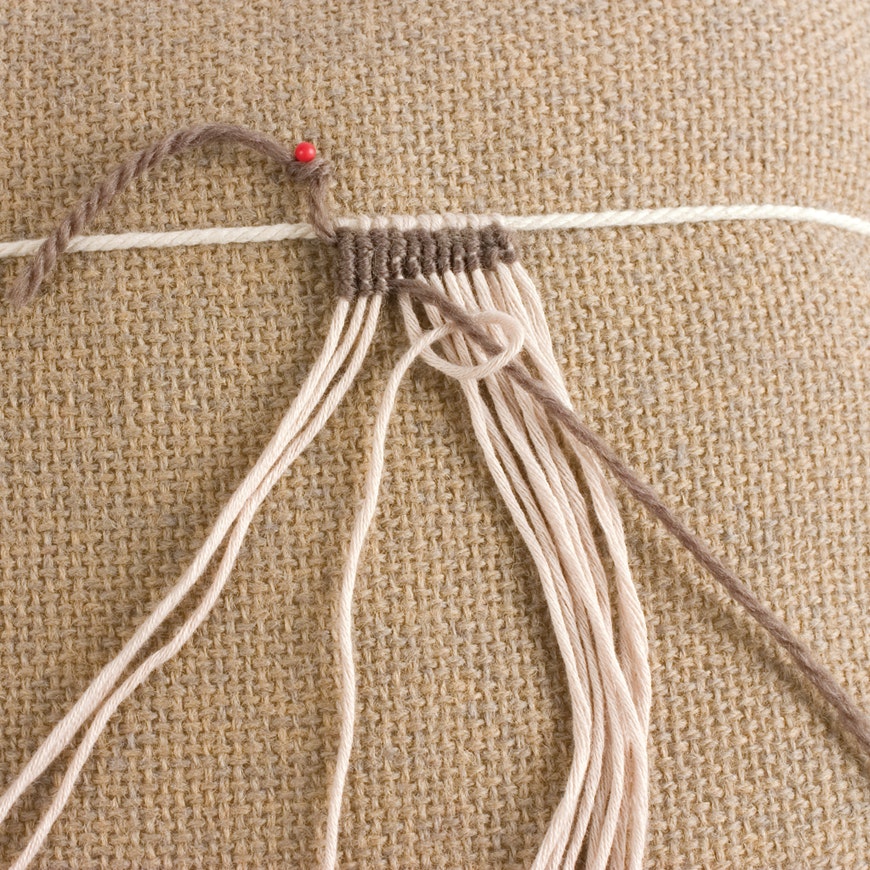
Resume using the contrasting yarn as the pattern yarn. When you reach the end of the row, begin working back in the opposite direction.
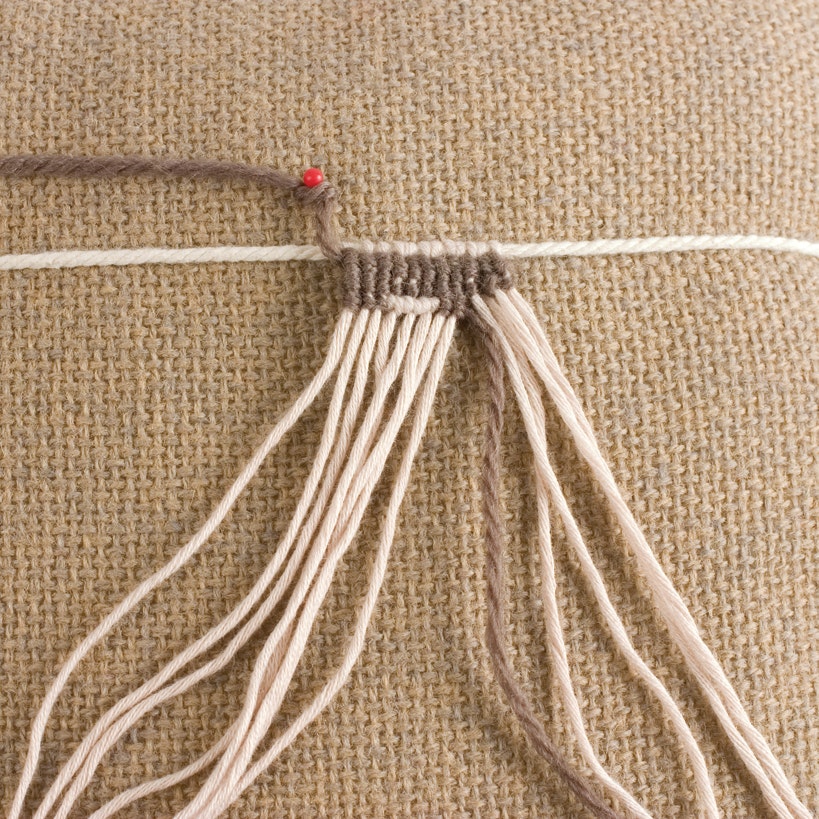
Cavandoli work can be used for free-form patterning or for precise charted work. For charted patterns, work two identical pattern rows for each row of the chart in order to square up the design.
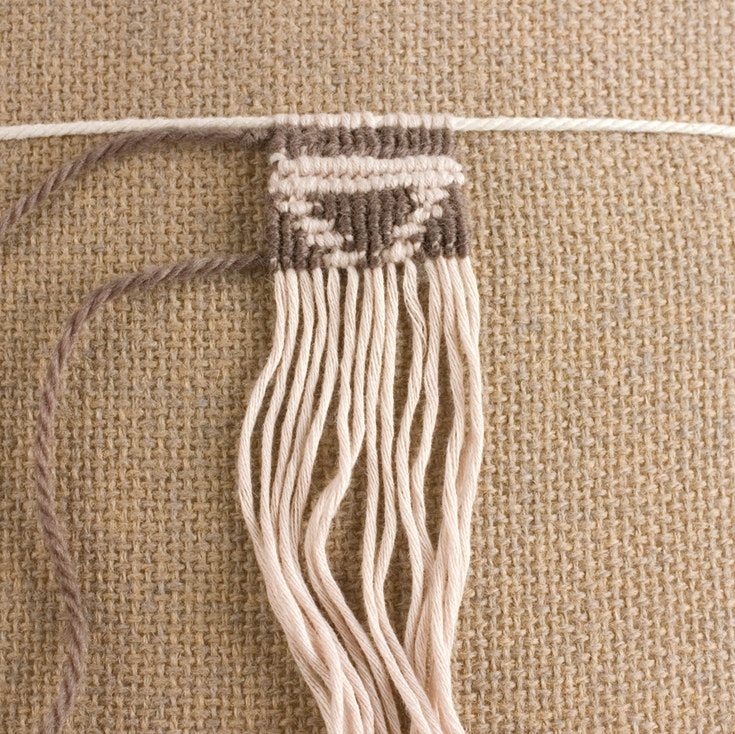
Find this article and read about lace in the May/June 2008 issue of PieceWork.
Also, remember that if you are an active subscriber to PieceWork magazine, you have unlimited access to previous issues, including May/June 2008. See our help center for the step-by-step process on how to access them.
Resources
- Babcock, Joan R. Micro-Macramé & Cavandoli Knotting: Level One. DVD. Santa Fe, New Mexico: Joan Babcock Designs, 2007.
- The Anchor Manual of Needlework. 1958. Reprint, Loveland, Colorado: Interweave Press, 1990.
Originally published September 8, 2017; updated September 8, 2020; updated August 19, 2024.

